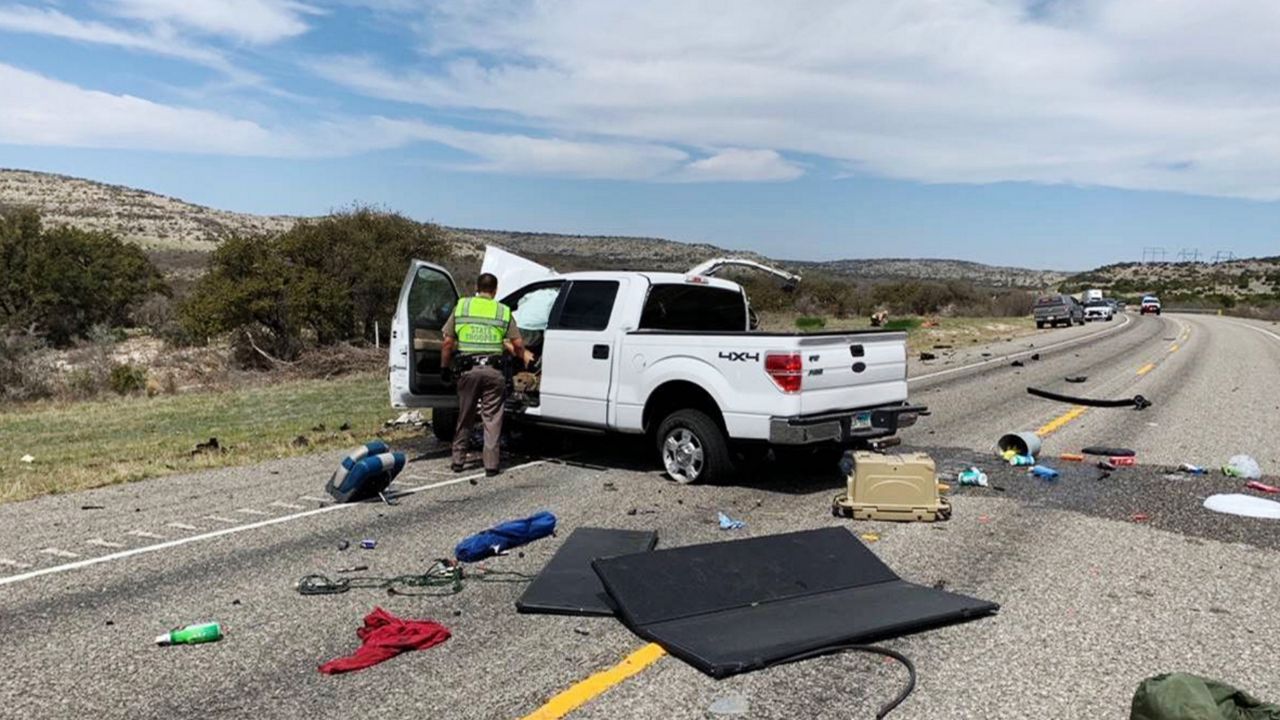Lawmakers in Washington hope to address the growing problem of reckless driving thanks to funds from the recently-passed bipartisan infrastructure framework, which President Joe Biden is expected to sign into law in the coming days.
The bill includes a historic amount of money towards road safety programs, including $6 billion for a “brand new ‘Safe Streets and Roads for All’ program that's going to help local communities reduce crashes and fatalities,” a Department of Transportation spokesperson said on a Tuesday press call.
That program will focus specifically on biking and pedestrian deaths, officials said.
The federal program, which may take several months to set up, would support cities’ campaigns to end traffic fatalities with a “Vision Zero” effort that could build traffic roundabouts to slow cars, carve out new bike paths and widen sidewalks and even reduce some roads to shift commuters toward public transit or other modes of transportation.
The legislation requires at least 15% of a state’s highway safety improvement program funds to address pedestrians, bicyclists and other non-motorized road users if those groups make up 15% or more of the state’s crash fatalities.
A government report published in October said the number of U.S. traffic deaths in the first six months of 2021 hit 20,160, the highest first-half total since 2006. The estimated number was 18.4% higher than the first half of last year, the biggest six-month percentage increase since the department began recording fatal crash data since 1975.
“These aren't just numbers,” Deputy Secretary of Transportation Polly Trottenberg said Tuesday. “These are family, friends, co-workers, neighbors, fellow Americans, and tragically, disproportionately Black, brown and Native American.”
A report from the Governors Highway Safety Association in June found that both male and female Native Americans and Alaskan Natives have the highest “annualized, age-adjusted traffic-related pedestrian death rates” out of all demographics, followed by Black and Hispanic males.
The voluminous bipartisan infrastructure bill also includes a number of safety requirements for automakers, like a mandate that they must find a high-tech way to keep drunken people from driving cars.
Under the legislation, monitoring systems to stop intoxicated drivers would roll out in all new vehicles as early as 2026, after the Transportation Department assesses the best form of technology to install in millions of vehicles and automakers are given time to comply.
Currently, some convicted drunken drivers must use breathalyzer devices attached to an ignition interlock, blowing into a tube and disabling the vehicle if their blood alcohol level is too high. The legislation doesn’t specify the technology, only that it must “passively monitor the performance of a driver of a motor vehicle to accurately identify whether that driver may be impaired.”
DOT officials on Tuesday said there has been “a lot of advancement in that particular technology,” and added that the department is working with both industry officials and safety advocates “to make sure we get it right.”
The bill also requires automakers to install rear-seat reminders to alert parents if a child is left inadvertently in the back seat, a mandate that could begin by 2025 after NHTSA completes its rulemaking on the issue. Since 1990, about 1,000 children have died from vehicular heatstroke after the highest total in a single year was 54 in 2018, according to Kidsandcars.org.
Congress, meanwhile, directed the agency to update decades-old safety standards to avert deaths from collapsing front seatbacks and issue a rule requiring automatic emergency braking and lane departure warnings in all passenger vehicles, though no date was set for compliance.



